Delivery Driver's App
FOR SIMPLIFYING DELIVERY PROCESS
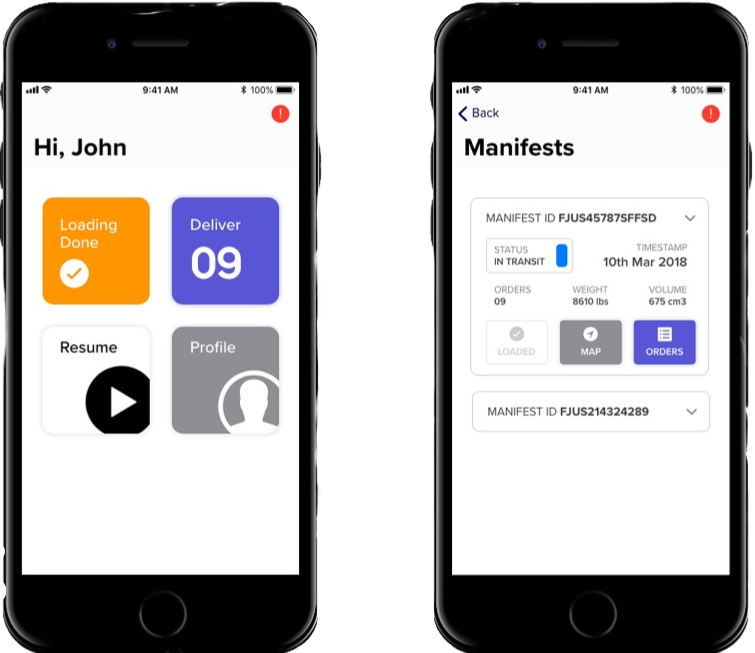
Overview
iOS App | UX | 3 WeeksIt is for in-house logistics customers, for delivery drivers to manage sales order deliveries well and capture proof of delivery.
Proof of delivery is where goods dispatched are delivered and the actual delivery date/time is recorded. i.e. establish and prove that the intended recipient has received the goods. Currently, once dispatched the fate of the goods is assumed, no evidence of what actually occurred is stored.
The app helps shipment easy, giving users access to the list of tasks they have to accomplish as well as online maps to help them navigate with an intuitive, seamless user interface.
MY ROLE
Understanding users, Ideation, Sketching and Wireframing

The basic workflow of the users
Process
UNDERSTANDING USERS
For initial understanding, stakeholder interviews were good. We were in constant contact with the stakeholders (Business Analysts, Managers, Admins)— based in Australia who gave us information about the system, business, problems, and goals.
We understood there were three categories of users in this system.
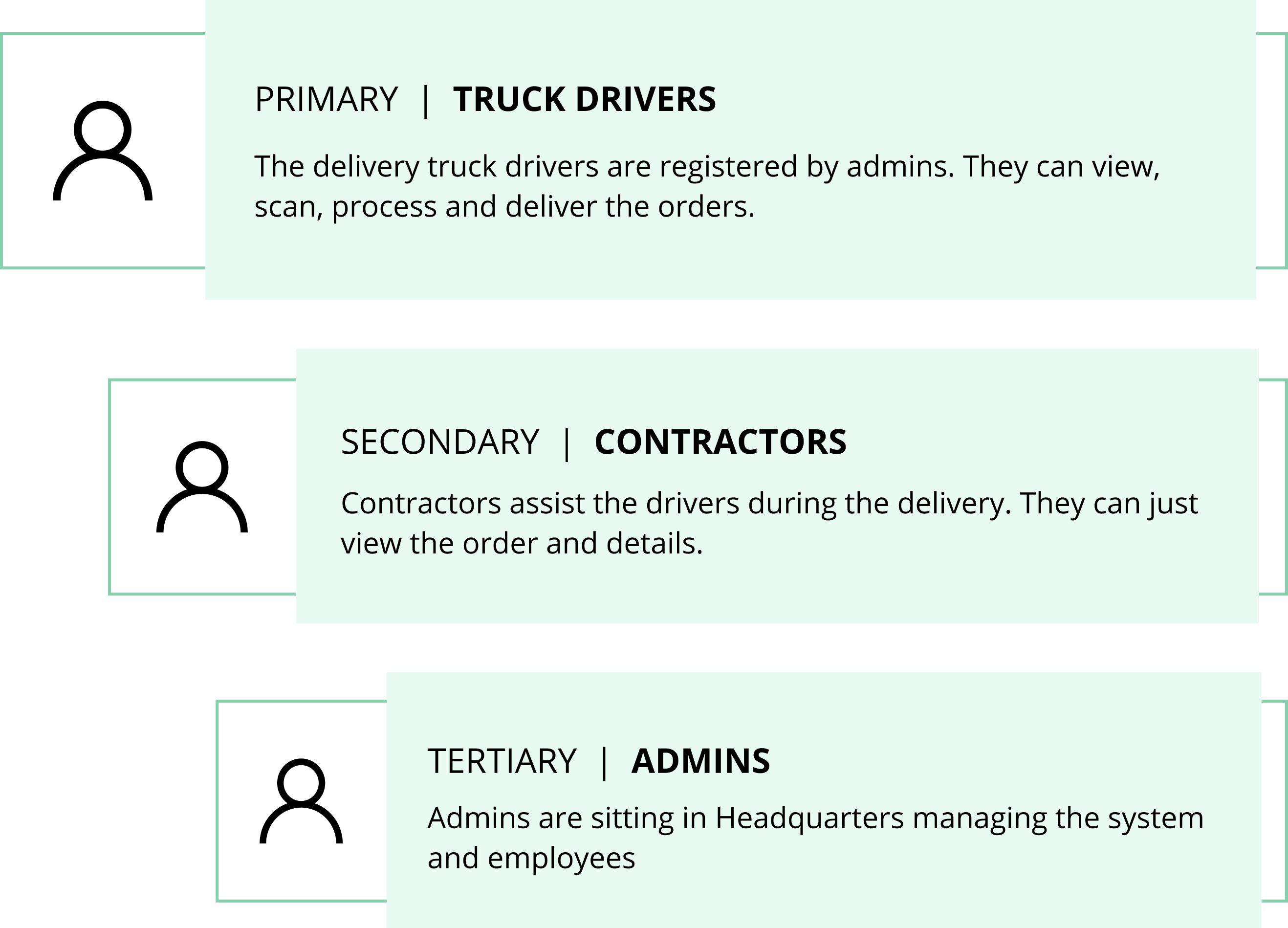
Three categories of the users
Considering the classification of primary, secondary and other users, we now had a challenge of understanding our primary users.
For gaining more details about the users, we had to manage with secondary research due to the limited availability of resources. The clients, as well as the users, were based in Australia and it was really difficult to arrange a one-on-one with actual users.
As a part of secondary research, the stakeholders gave us relevant information about users by interacting with them directly. We in turn connected with them every alternate day during the timeline.
But this wasn't really helpful for understanding the pain-points, behaviors of the users.
As we saw delivery executives outside our office one day, the next day we were ready with a script and conducted in-person interviews with the delivery agents of Amazon, Myntra and BigBasket.
.png)
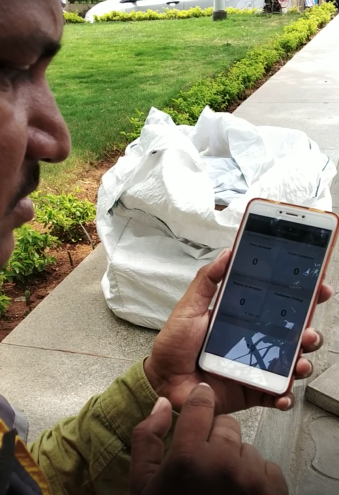
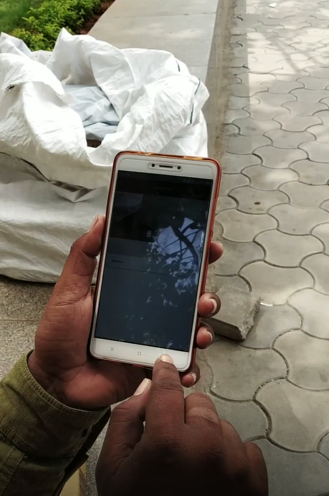
Secondary user research with a similar user group
PERSONA AND USER-STORIES
This informal contextual inquiry was taped and was shown to the clients and stakeholders to confirm our insights and intended next steps.
With these insights, we could draft a user -stories and sample persona.
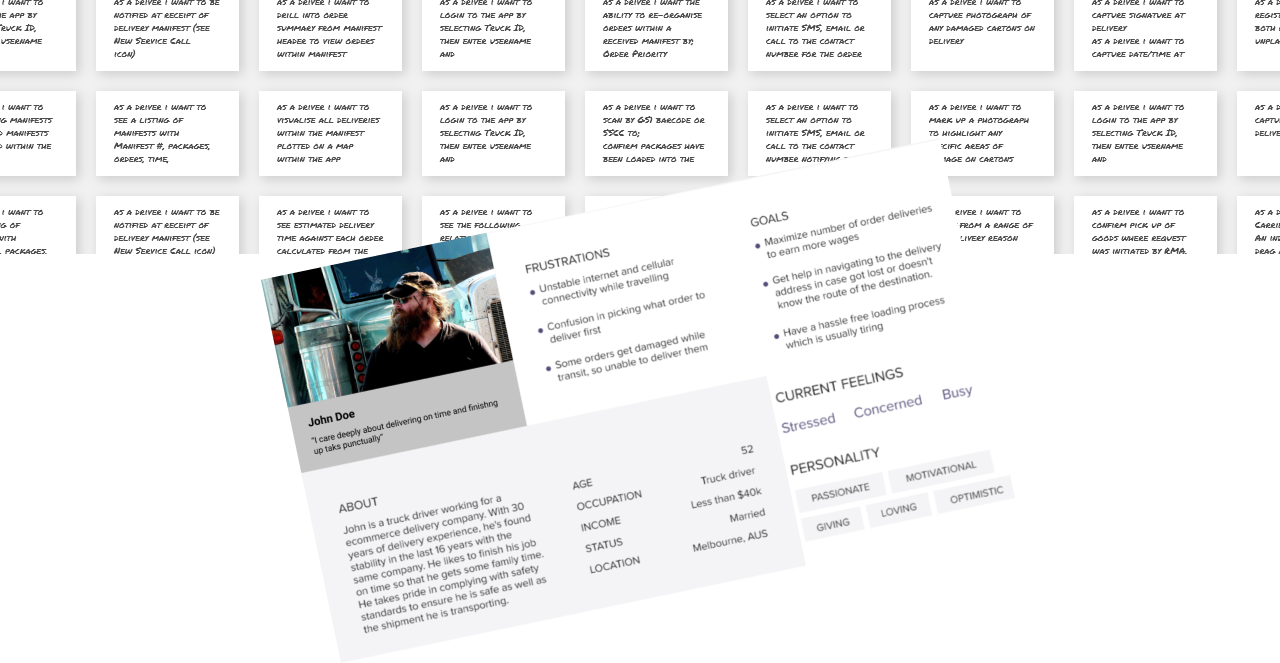
User stories and persona
IDEATION AND SKETCHING
Now we were ready for red-route analysis of the tasks which helped us in ideation and brainstorming crazy ideas and still keeping us on the same page and being relevant as the timeframe was really limited.
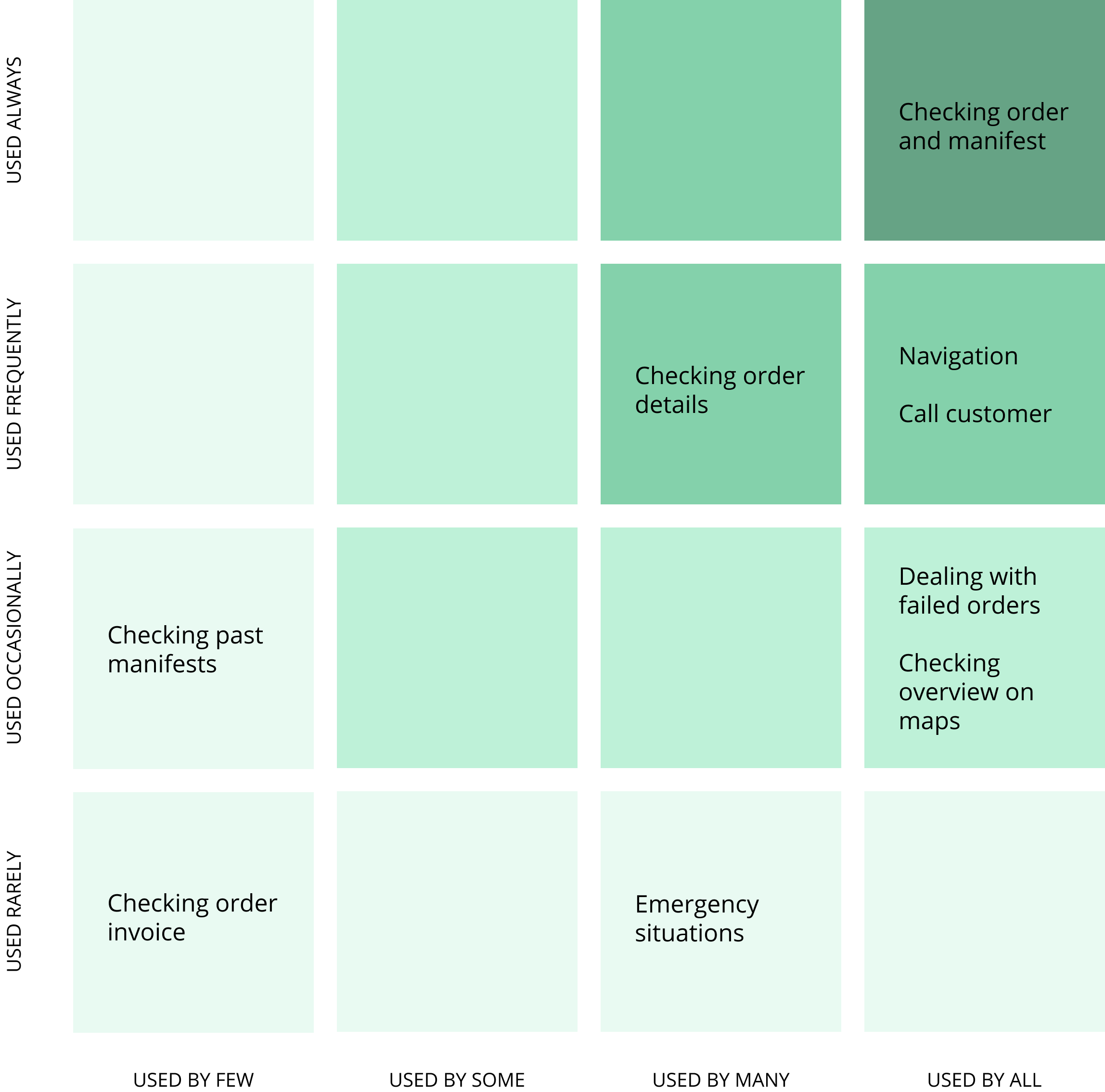
Red route mapping
.jpg)
Affinity diagramming
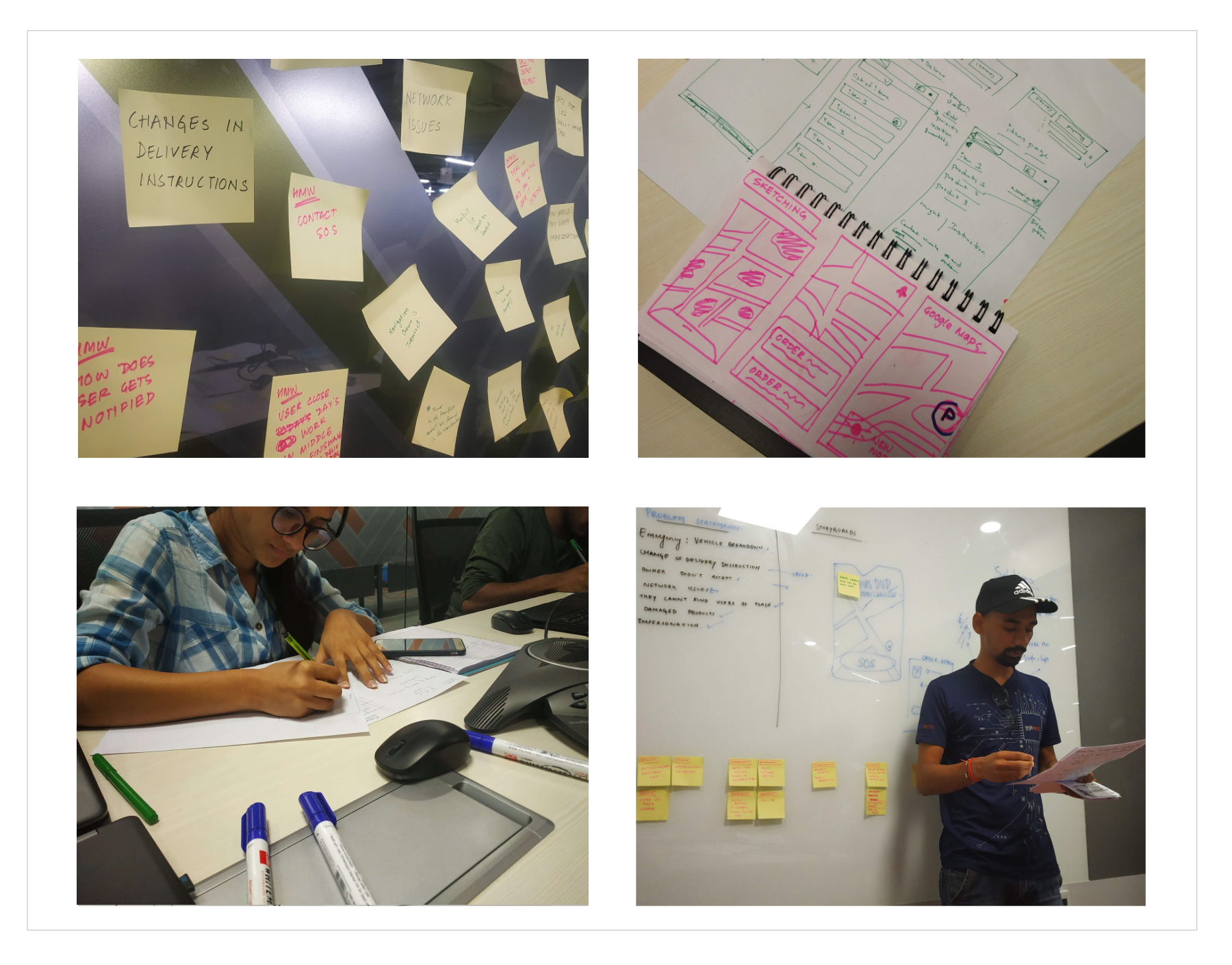
Sketching and idea-sharing
.png)
Brainstorming and wireframing
WIREFRAMES AND ITERATIONS
All throughout the process of ideation and wireframing, we were making informed decisions and also taking insights from our stakeholders and developers. During this collaborative process, whenever we were stuck, our stakeholders will get us answers from the actual users and we made necessary changes in the designs.
.png)
Wireframe and user flow
.jpg)
Design iterations
FINAL SCREENS
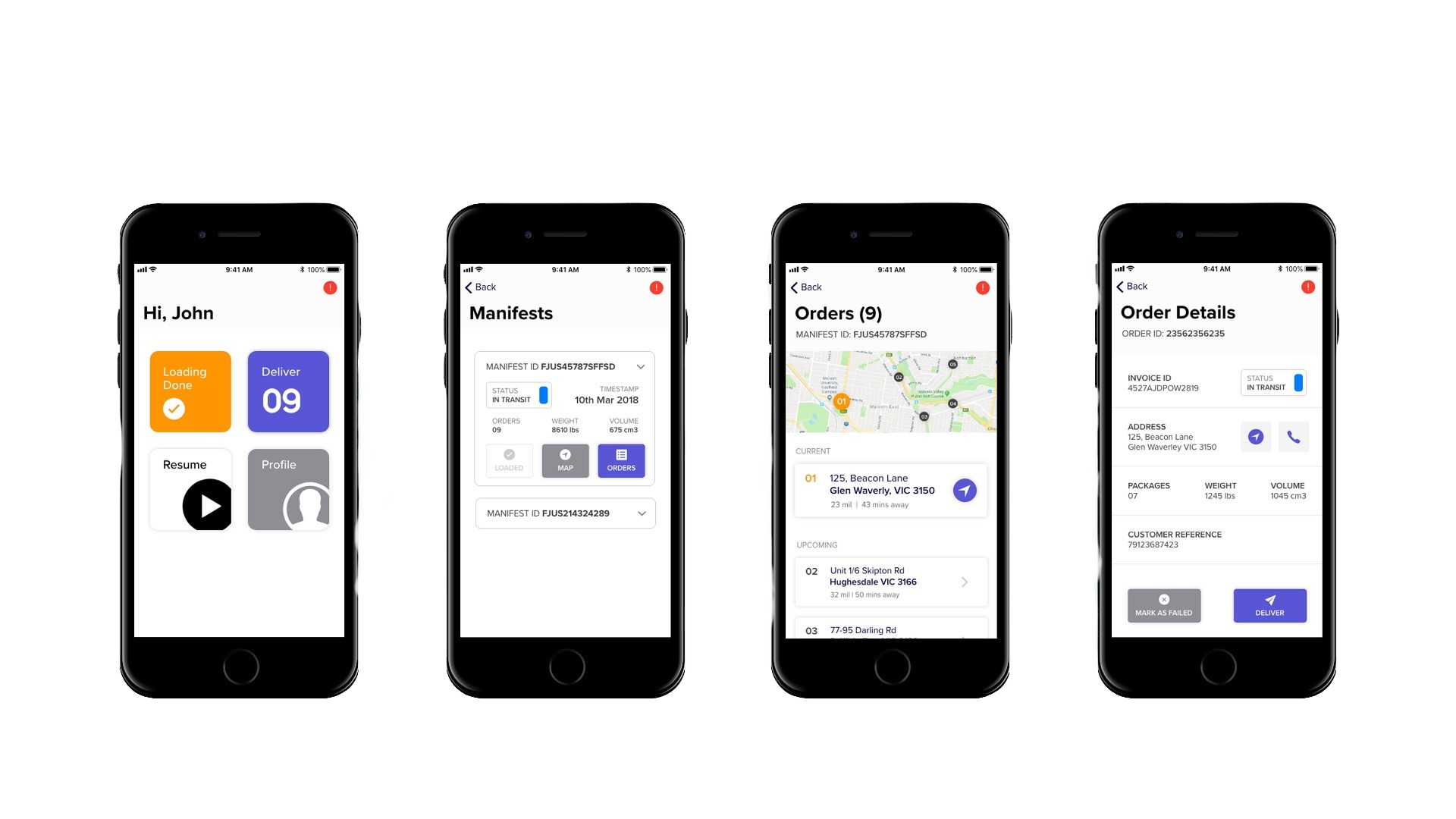
Final high-fidelity designs
CONCLUSION
A budget of $458/driver was allocated for the training of the drivers on the tool, the intuitive UX of the application saved the cost. The drivers could easily adopt the new app to their process. This saved a lot of money and resources for our clients and our users from the boring training sessions.